|
...Continued from Page 13.
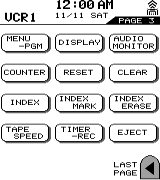
Before...
|
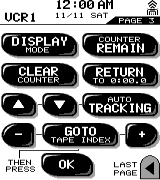
After!
|
Since the software is currently geared solely to template layout, there is no way to add infrared signals to buttons or record macros – that must all be done on the remote. Although the software allows you to upload and download .LDT files, which contain learned signal data, there does not seem to be a way to "add" that information to the main .MDL layout file. A right-click "Add Button" option available for each button opens up a screen with a list of all original pre-programmed functions, but seems to do little else. What you select is not maintained the next time you open the same window. Also sorely missing is an "Undo" function – every move or delete is unrecoverable.
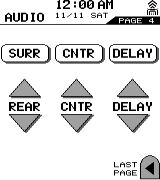
Before...
|
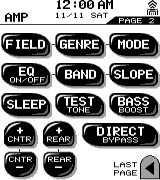
After!
|
Due to the fragmented nature of MXOP’s files, sharing them over the Internet will prove quite a challenge. Although the software certainly supports creating an entire library of files, four things must be transferred with each one. 1) The main .MDL file, which contains layouts, 2) all .BTN files that go with it – they’re not saved with the .MDL, 3) the BUTTON.INI file, so you know which buttons go with each file and 4) an .LDT file which contains learned infrared signals. The real issue will be with .BTN files, since you cannot simply open one person’s custom design then switch to someone else’s. One must also realize that creating a totally custom layout will negate the entire preprogrammed database of codes – you will need to learn all functions from your original remotes.
Communications
To download a file you must enter the Setup menu on the MX-1000 and select the "Download Program" function, then perform the same operation on the computer. I had no problems sending files to the remote, but I was unable to receive files from it – which means I could not test exactly how .LDT files operate. I was able to confirm that learned signals are stored between layout downloads – even with a completely different layout in the middle – which begs the question of where the learned data goes when its assigned button disappears.
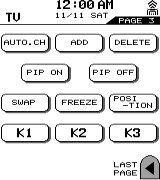
Before...
|
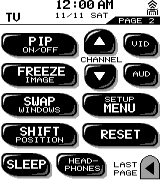
After!
|
Other tidbits...
Since my original MX-1000 would not take a file download properly, I was provided with a new "in production" unit. Some differences are visible – the bezel surrounding the LCD screen has gone from a silver to a beige color; the MX-1000 logo at the bottom has also become a more fluorescent shade of red. But a hardware change was also evident – when the backlight is activated the screen now inverts, meaning that a black button on a white background becomes a white button on a black background. This certainly creates a unique appearance, but has a negative effect when ambient light is of a medium level – the screen washes out completely. Finally, the adjustable contrast range is now centered properly, with the ideal position right in the middle.
Although the MX-1000 Operating Program is a little rough around the edges and slow to use, it’s important to remember that this is just the first release. Despite the operational shortcomings I was able to modify my configuration quite completely in just a few nights – and I’m quite pleased with the results. If you’ve been waiting to see exactly what the MX-1000 can do, be sure to download and try out the software. You just may be surprised at what is possible.
- Daniel Tonks (Remote Central)
| 
